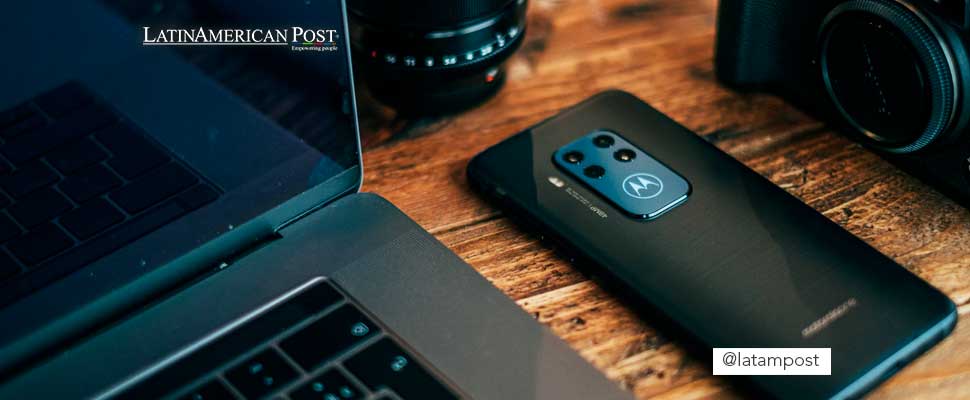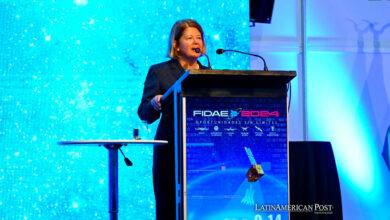Billion Dollar Losses: 5 Big Investments That Failed
These Are 5 Failed Multi-million Dollar Investments.

The emergence of new application models on the Internet can generate great interest from investors. Photo: Unsplash
LatiAmerican Post | Juan Manuel Bacallado Gómez
Escucha este artículo
Leer en español: Pérdidas multimillonarias: 5 grandes inversiones que fracasaron
Investors are constantly searching for promising companies at affordable prices, in order to improve them and increase their income, as well as the value of their shares. This is their way of making money, but it doesn't always work. What is new will not always be successful, even if it seems that way at first. For this reason, it is possible for a large purchase to turn into a huge failure, as it did in these 5 cases.
HP and Autonomy
In 2011, the American hardware and software company Hewlett-Packard, better known as HP, completed the purchase of Autonomy, a British company specializing in software that was succeeding, with clients such as Procter & Gamble, General Motors, Nestlé among others. Its activity was based on creating software to find and organize files such as emails and other information. As the second-largest software company in the UK, HP paid $ 11.1 billion for it.
El exCEO de Autonomy, acusado de fraude en su venta a la extinta HP. Mile Lynch, exCEO de Autonomy, está acusado de inflar artificialmente los ingresos de la empresa antes de su venta a HP, así como de intimidar, presionar y pagar sobornos a las … https://t.co/W7Pww3YtgW pic.twitter.com/nOkm1zUAZ6
— Nica Tecno (@NicaTecno) November 30, 2018
However, just one year later the results were not as predicted. Despite the fact that the purchase of Autonomy was advised by 15 accounting firms, the revenues were not as expected, so HP announced a loss of 8.800 million dollars by amortization since the software service was devalued. This financial disaster caused lawsuits, as HP executives claim that Autonomy falsified its profits by inflating the data, while the former directors of the British company responded that there was no fraud, but that HP mismanaged the company.
Google and Motorola
In 2011, Google began its project to manufacture smartphones, for this it acquired Motorola, an American company specializing in telecommunications and smartphone design. Google would have paid 12,500 million dollars in cash as announced by its CEO, Larry Page. This merger promised to be a success and Google was compared to Apple. However, in the end, it turned out to be the opposite, in 2013 Google would again sell Motorola to Lenovo, for only 23% of what it had paid, that is, 2,910 million dollars. This meant a difference of 9.590 million dollars, although Google claimed to have obtained 17,000 patents.
Sprint and Nextel
In 2004, two mobile phone operators formed an alliance to become the third-largest company in the sector in the United States, thus forming Sprint-Nextel, where Sprint would have invested some 36,000 million dollars to acquire Nextel. When the two companies came together, their value exceeded 70,000 million dollars. In 2008 everything changed. Sprint-Nextel was worth $ 23.5 billion, after Nextel lost $ 29.7 billion in value. In the first quarter, they lost more than a million subscribers and the competition matched their prices on phone plans. In 2013 Sprint would terminate Nextel in the United States and continue independently.
It may interest you: The most valuable companies in Latin American
Bank of America and Countrywide
In July 2008, the second-largest bank in the United States, Bank of America, closed the purchase of Countrywide, a lending firm with a 17% interest in the country's mortgage loans. The deal would close for $ 2.5 billion, with the goal of Bank of America becoming America's number one mortgage lender. In September of the same year, the American financial crisis would explode after the collapse of the real estate bubble, known as one of the worst crises in the history of the country, Countrywide was involved and it was Bank of America that suffered the consequences, with debts that exceeded 50,000 million dollars.
AOL and Time Warner
En plena burbuja de Internet, el portal estadounidense America Online (AOL) y Time Warner, líder de los medios de comunicación tradicionales, unen fuerzas. #EfeméridesTecnológicas pic.twitter.com/QOE0MbooO9
— Reclu IT (@RecluITmx) January 10, 2020
In 2000, at the height of the Internet boom, AOL, an American company dedicated to providing services within the Internet, joined Time Warner, currently called Warner Media, a company dedicated to media and entertainment. This alliance cost 164,000 million dollars for Time Warner since it acquired 45% of the shares of AOL, which at that time had a total value of 226,000 million dollars. The goal of this alliance was to bring Time Warner's traditional media – magazines, cinemas, television – to the Internet ecosystem.
In 2003, with the collapse of the Internet bubble and the emergence of new competitors, AOL lost 70% of its value, causing a loss of 97.217 million dollars for Time Warner. In 2015, Verizon would buy AOL for $ 4.4 billion, 1.9% of its value in 2000, making it the most disastrous merger of the last century.



